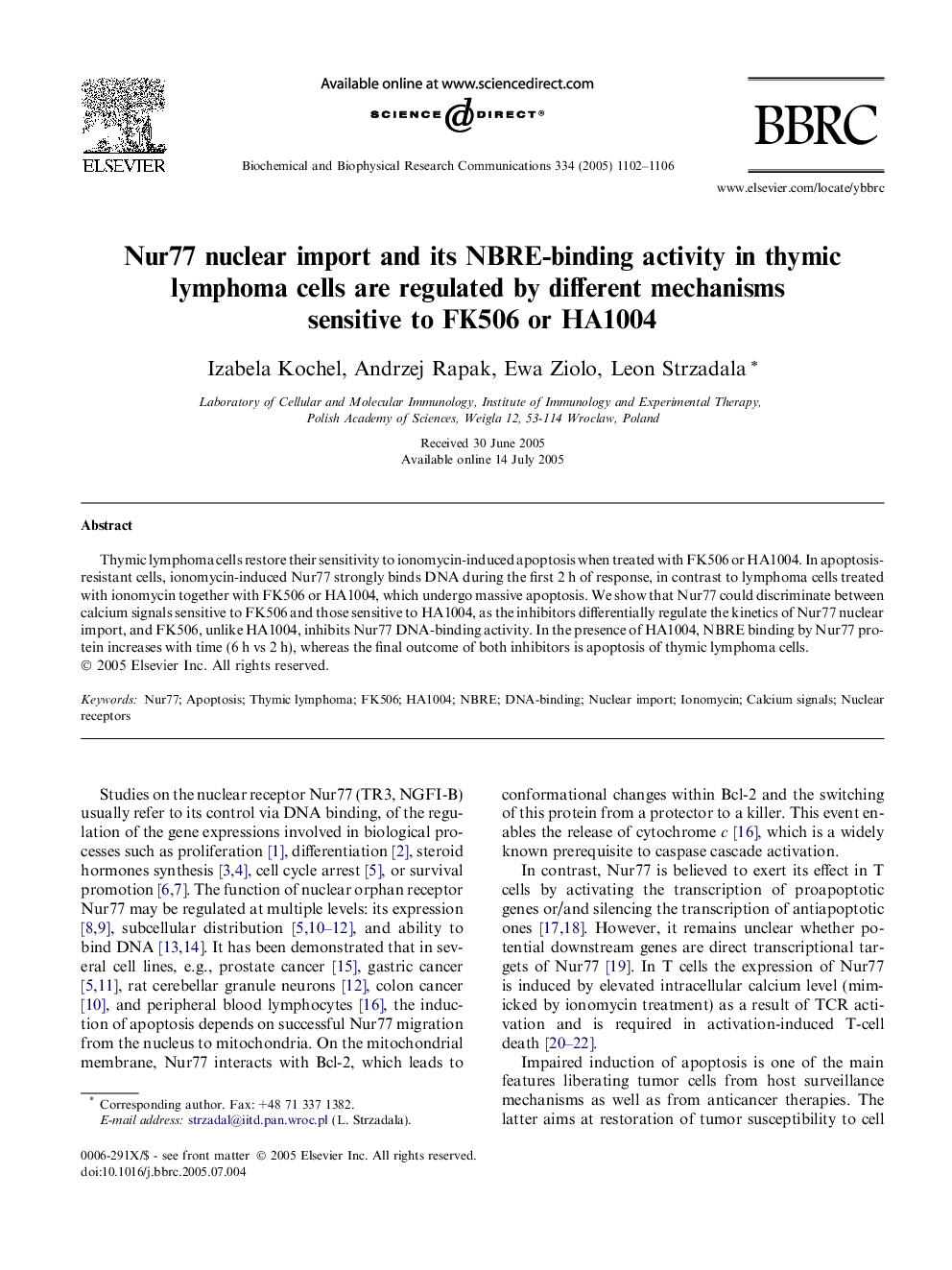| Article ID | Journal | Published Year | Pages | File Type |
|---|---|---|---|---|
| 10769006 | Biochemical and Biophysical Research Communications | 2005 | 5 Pages |
Abstract
Thymic lymphoma cells restore their sensitivity to ionomycin-induced apoptosis when treated with FK506 or HA1004. In apoptosis-resistant cells, ionomycin-induced Nur77 strongly binds DNA during the first 2Â h of response, in contrast to lymphoma cells treated with ionomycin together with FK506 or HA1004, which undergo massive apoptosis. We show that Nur77 could discriminate between calcium signals sensitive to FK506 and those sensitive to HA1004, as the inhibitors differentially regulate the kinetics of Nur77 nuclear import, and FK506, unlike HA1004, inhibits Nur77 DNA-binding activity. In the presence of HA1004, NBRE binding by Nur77 protein increases with time (6Â h vs 2Â h), whereas the final outcome of both inhibitors is apoptosis of thymic lymphoma cells.
Keywords
Related Topics
Life Sciences
Biochemistry, Genetics and Molecular Biology
Biochemistry
Authors
Izabela Kochel, Andrzej Rapak, Ewa Ziolo, Leon Strzadala,
